In the Words of Women
/In the Words of Woman
Read MoreThe Hidden Murals of Eastgate
Read MoreClara Barck Welles in 1906.
Read MoreEntry from Mildred Dunning’s 1932 diary
Read MoreFrank Peck’s Remembrance of Fourth of July
Read MoreHelen Williams Plum
Read MoreAll Citizens: Caroline Latham Perry (Wilson, Towne)
Read More
Players Green, photograph, c.1940s.
This stunning vista of Lilacia Park is the open meadow flanked by crab apples and tulips stretching west from the pond. This lawn is known as the Players Green on the Jensen blueprints and is best seen from Players Hill. Players Hill was built as an open area overlooking the pond, but in later years, the deck was installed for safety concerns.

First Lilac Festival Booklet, c. 1930.
People can gather on the lawn to watch the Lilac Court and see the Lilac Queen be chosen every May. The festivals in the 1930s were pageants with a large cast of actors following a script written for the occasion. Many Lombard women were recruited to sew costumes for the players while other Lombardians built props for the performances.
The current way of presenting the court and crowning the Lilac Queen started when the Lilac Festival resumed after World War 2.
Jens Jensen understood the connection between performing arts and nature and the need for entertainment spaces in crowded urban areas. When this area was part of the Plum estate, it was planted with rows of lilacs so that Colonel William Plum could study their growth, chart his garden, and cultivate young plants. When Jens Jensen began creating Lilacia Park, originally called The Community Garden, Plum’s lilacs and other plants were carefully rearranged to create the place we all enjoy every spring.
Written By: Jean Crocket Lombard Historical Society Archivist
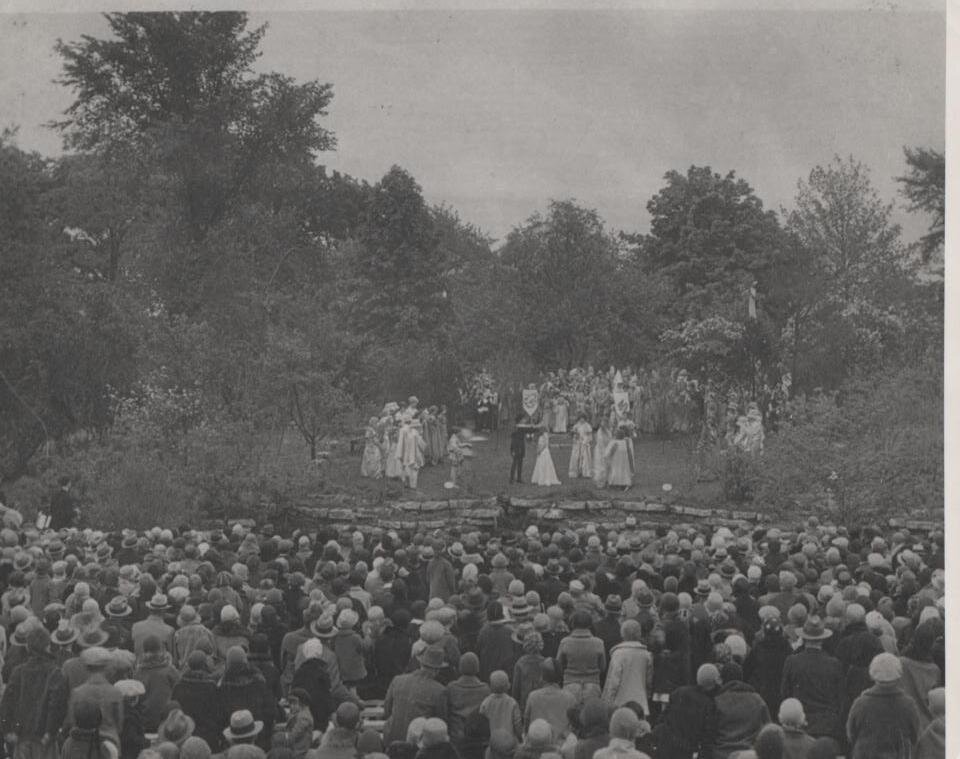
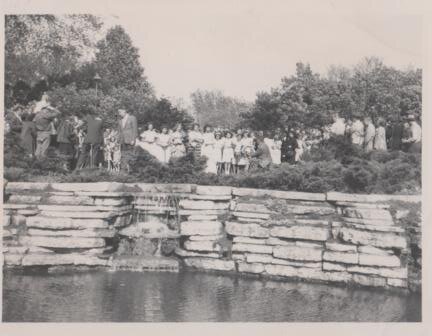
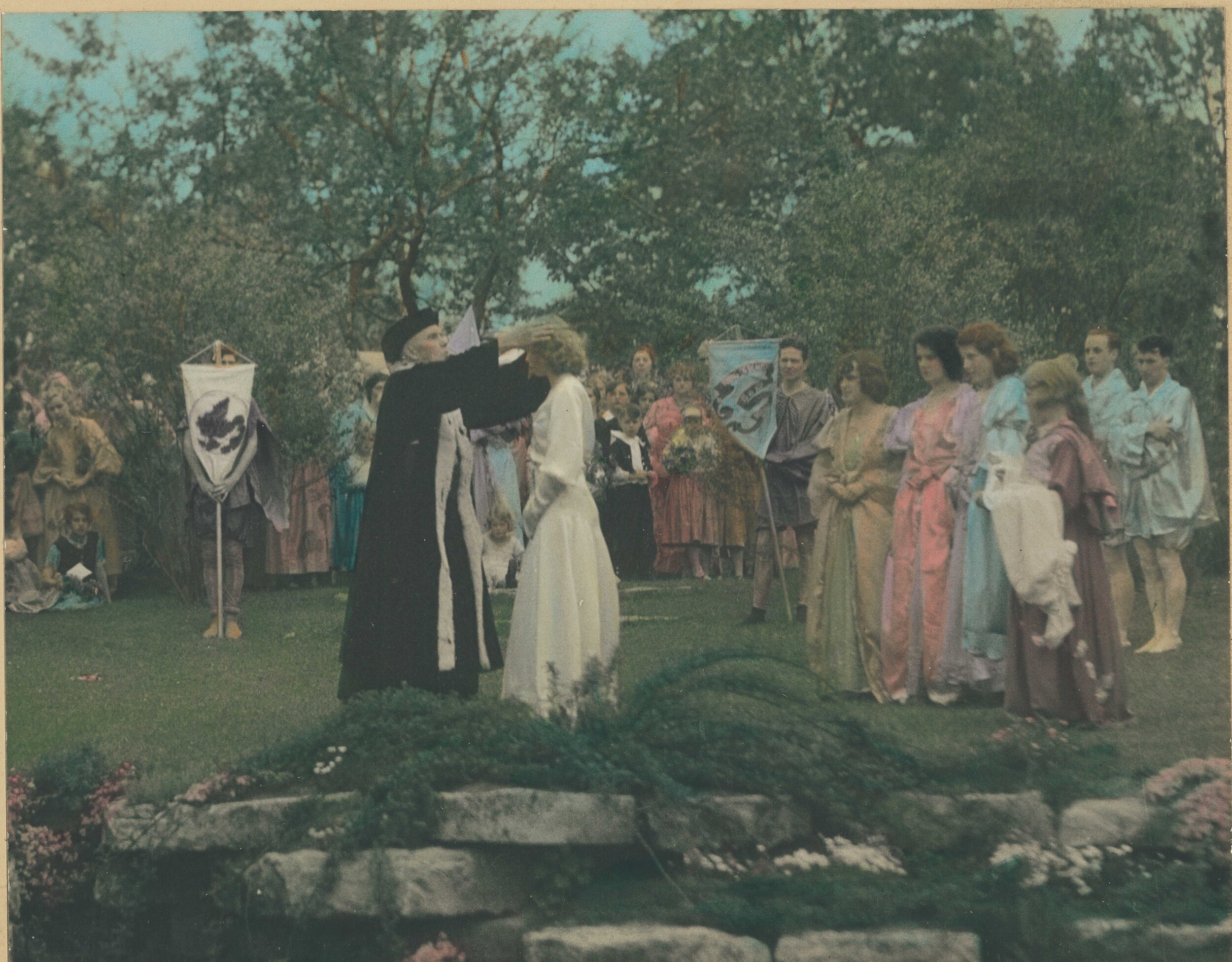
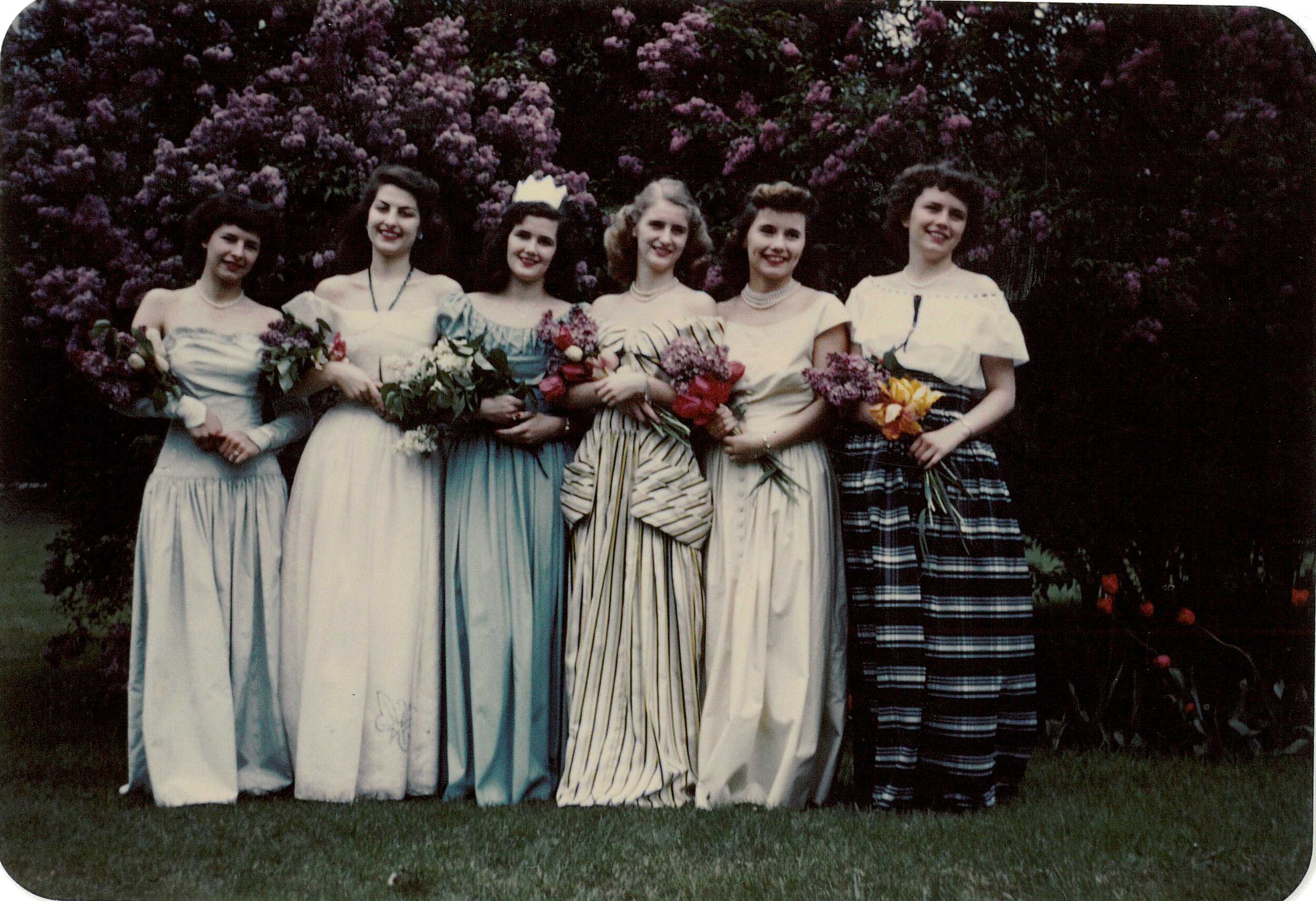
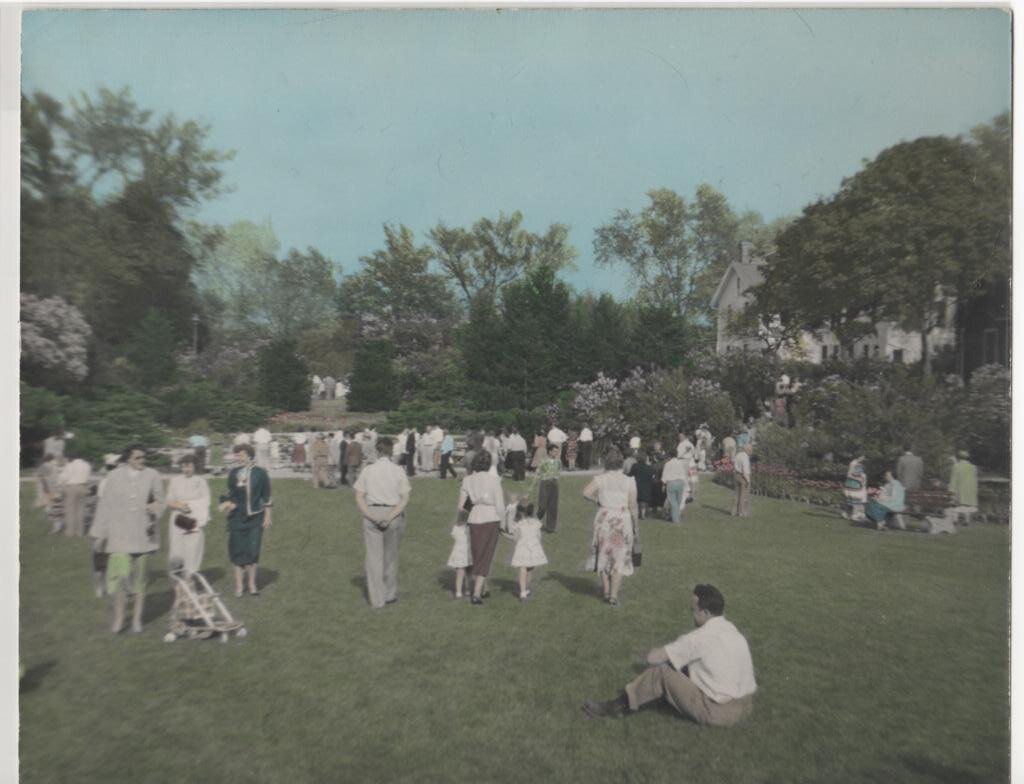
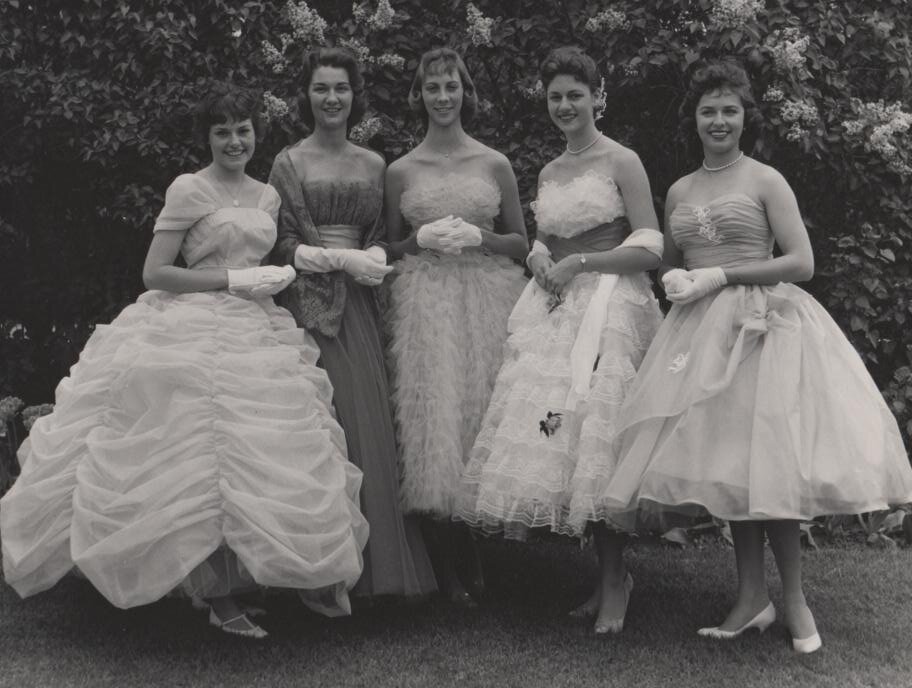
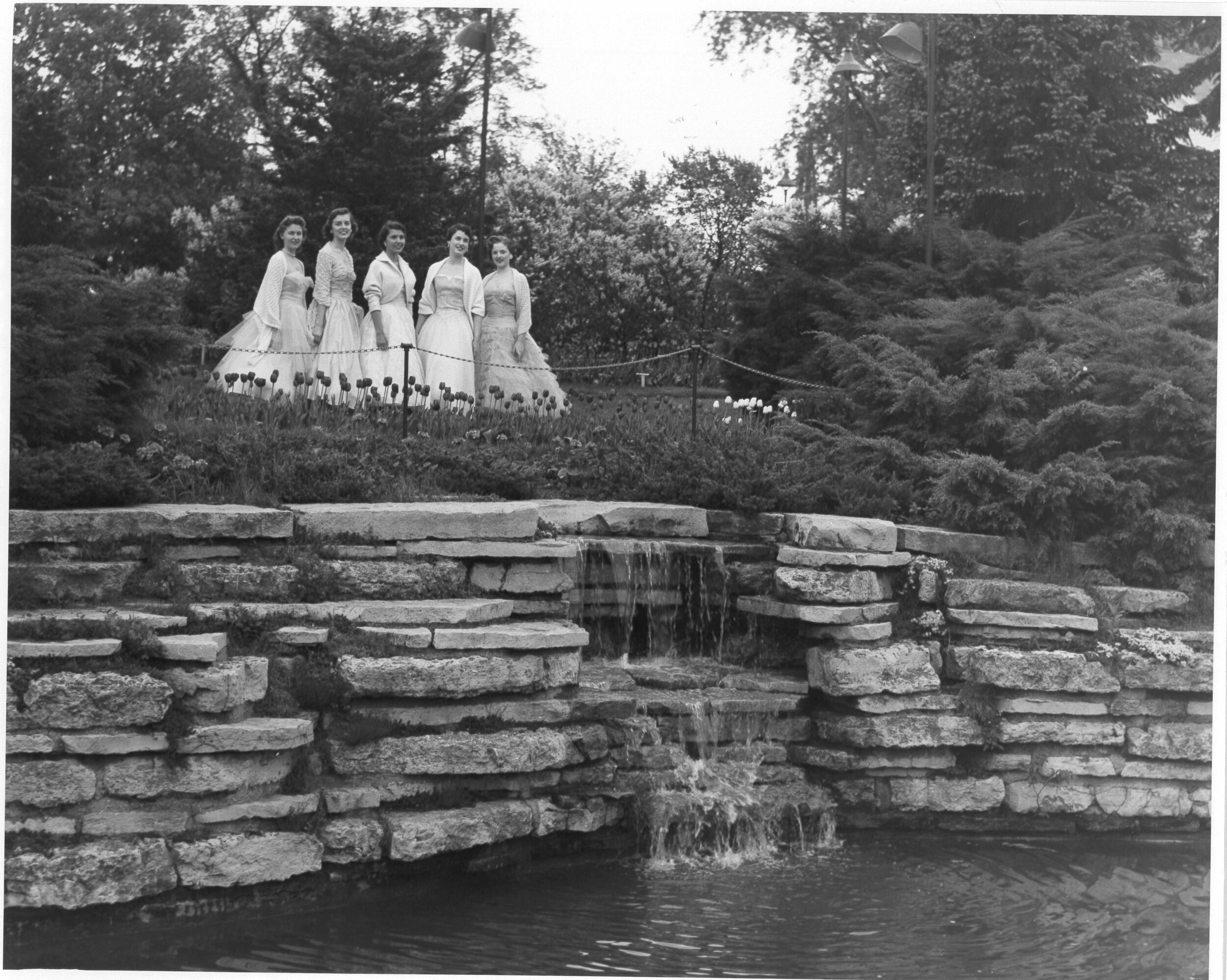
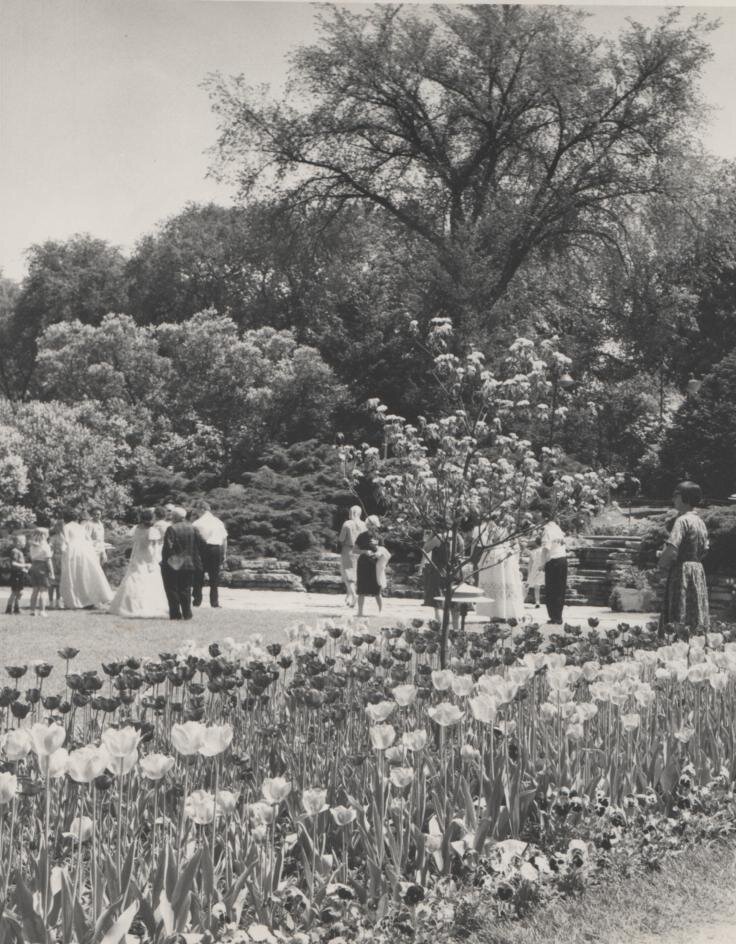
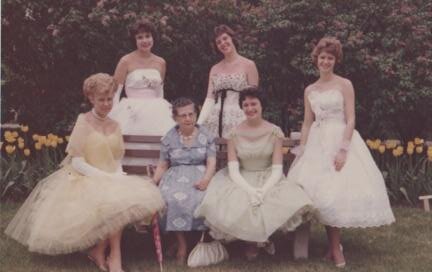
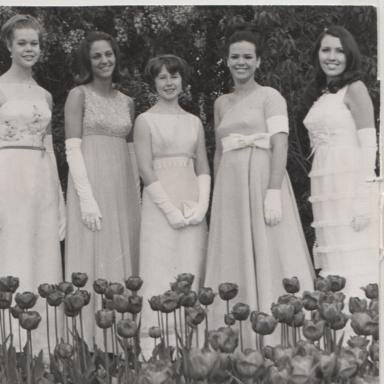
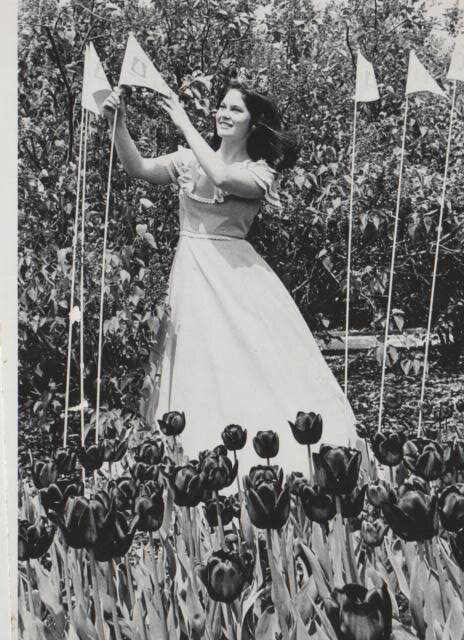
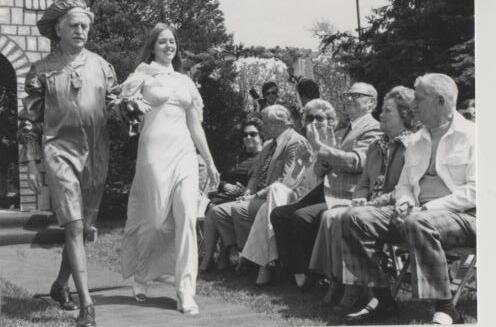
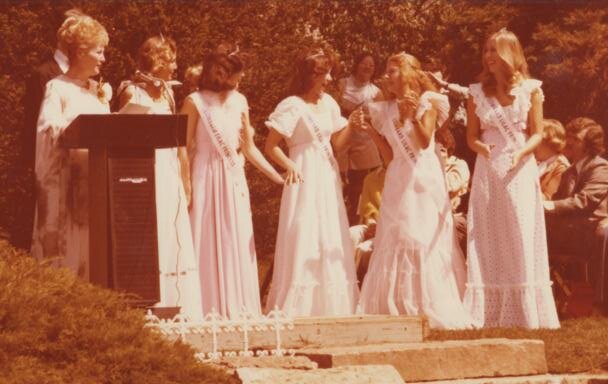
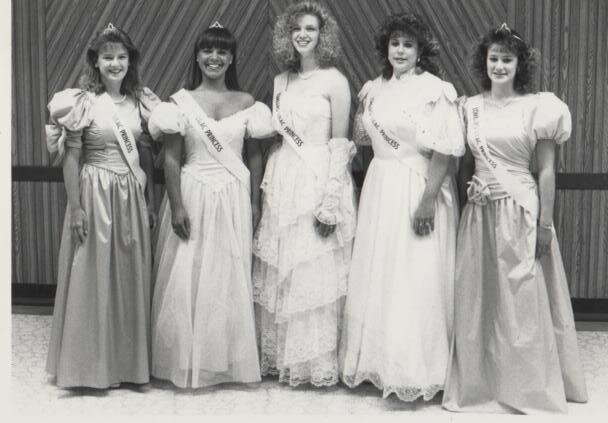
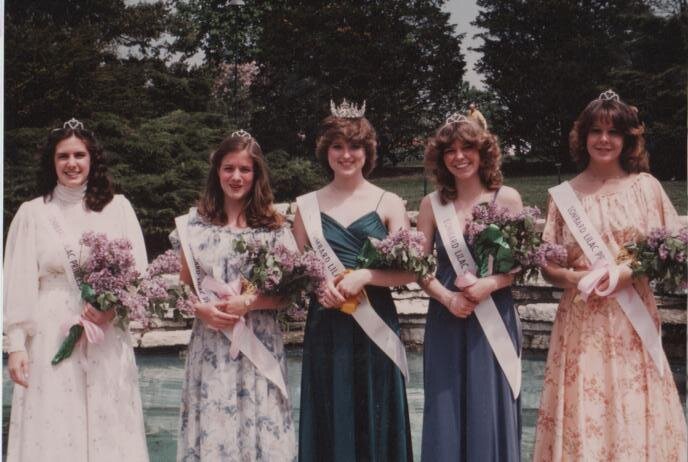
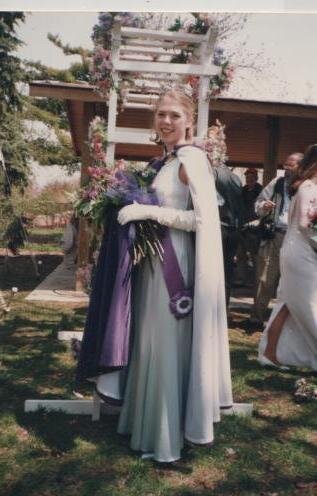

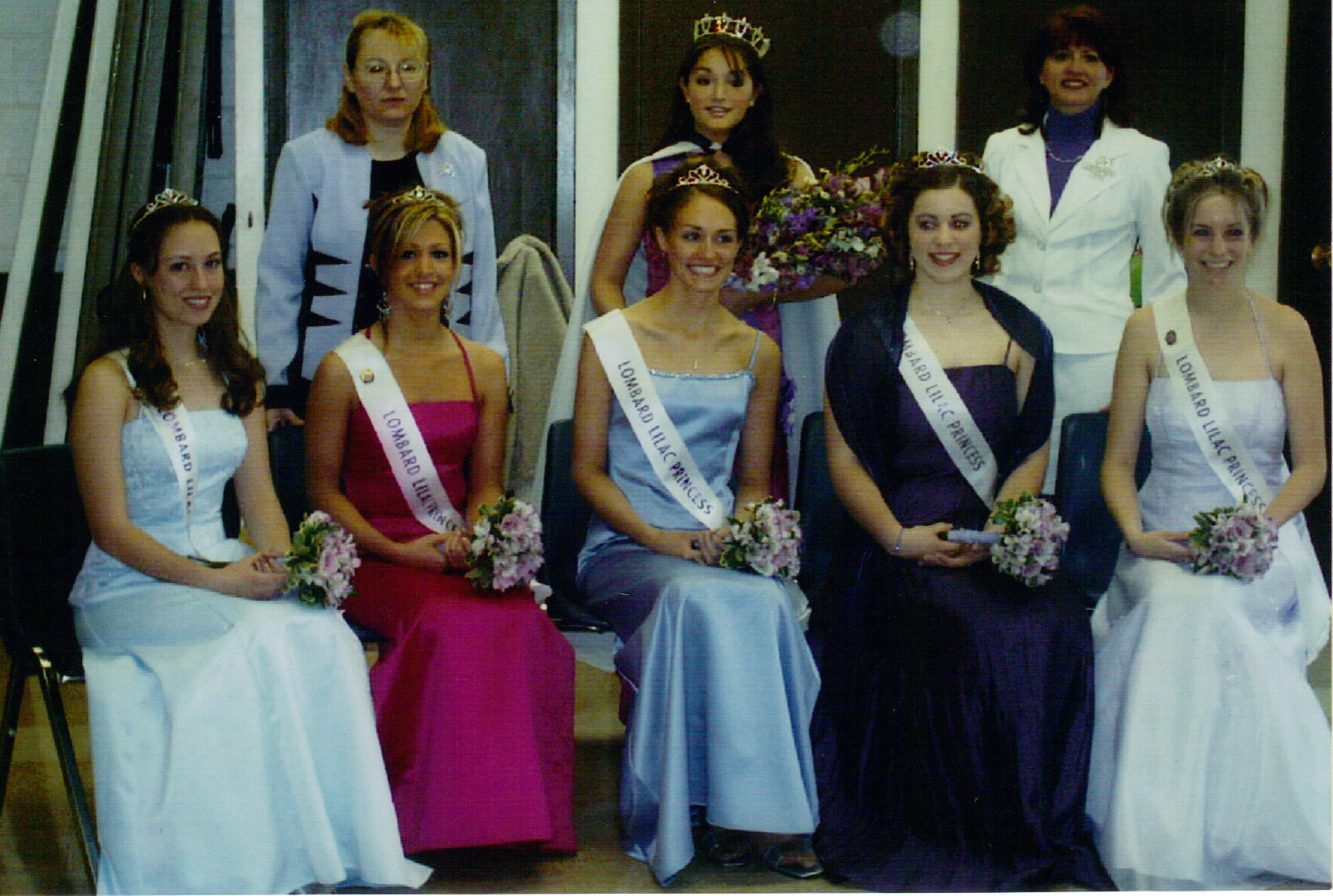
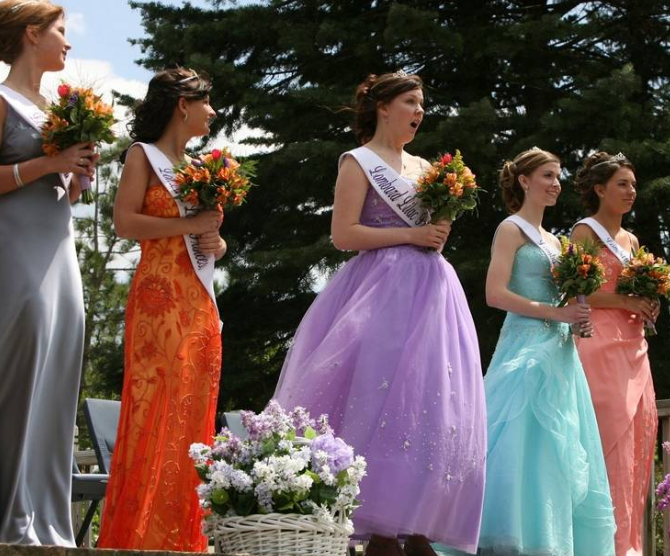
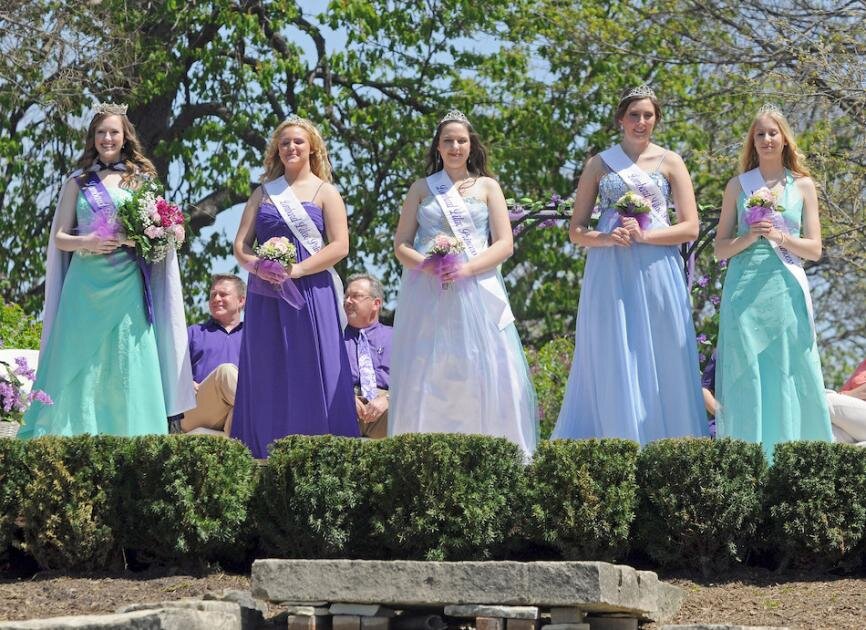

Photograph, c. 1940s.
One of the most beloved “residents” of Lilacia Park the Iron Deer, formerly known as Rastus*. This deer was cast in a Pennsylvania foundry in 1888 and brought to the A.H. Andrews estate on Main and Parkside to live near a fellow iron dog statue in their garden. When the Andrews home burned, the statues were removed. The dog disappeared but the buck was eventually moved to Lilacia Park. Visitors will notice this buck no longer sports his antlers due to vandalism years ago.

Curteich Postcards
The Deer started out his Lilacia Park residence near Plum's home on the east side of the park, and over the years he could be found in different locations. The Lombard Park District would move the deer in the fall to be stored in a garage.
Today, the Lombard Park District uses Lilacia Park as an all four-seasons park, and the Iron Deer stays to greet visitors year-round. His permanent home can now be found on the west side of the park in a raised flowerbed.
Because he is now in his senior years, it isn’t encouraged to “ride” him but as one of the long traditions of Lilac Time, people can still and should pose for pictures with the Iron Deer.
*Please note this term is a historic racially insensitive term. However, LHS is unaware of how the Iron Deer received this name.

Lombard Historical Society collects, preserves, interprets and promotes the history of Lombard.
SEARCH THE LHS WEBSITE:
UPCOMING EVENTS:
Hover over highlighted date and click the event to get details.

© Lombard Historical Society
The Lombard Historical Society office:
The Victorian Cottage and Office
23 W. Maple, Lombard, IL 60148
Sheldon Peck Homestead, 355 E. Parkside, Lombard, IL 60148
Contact Us